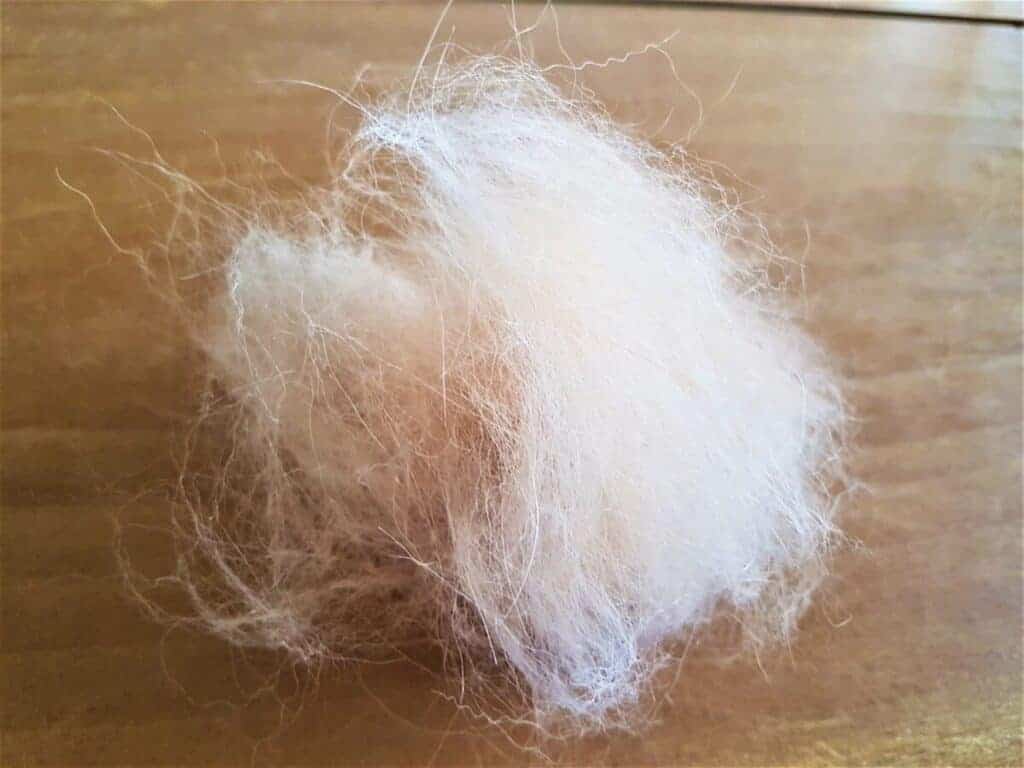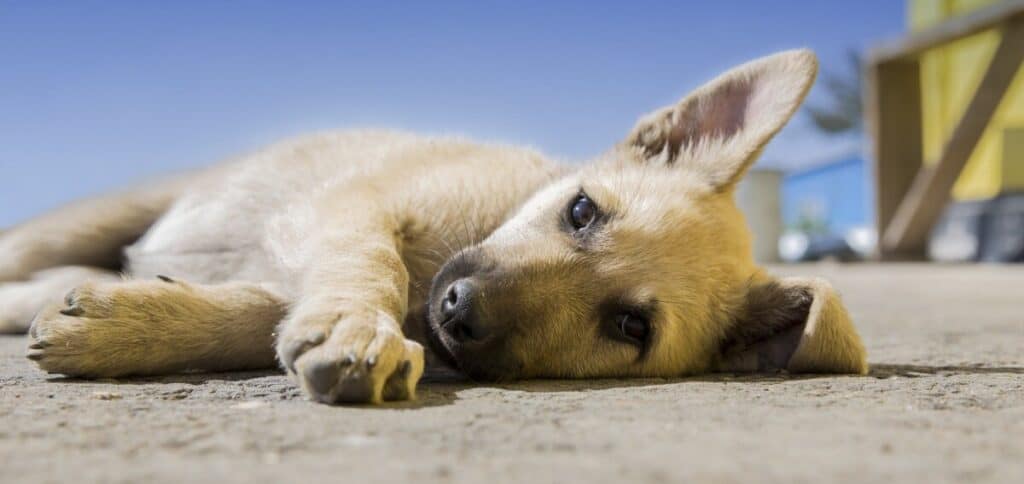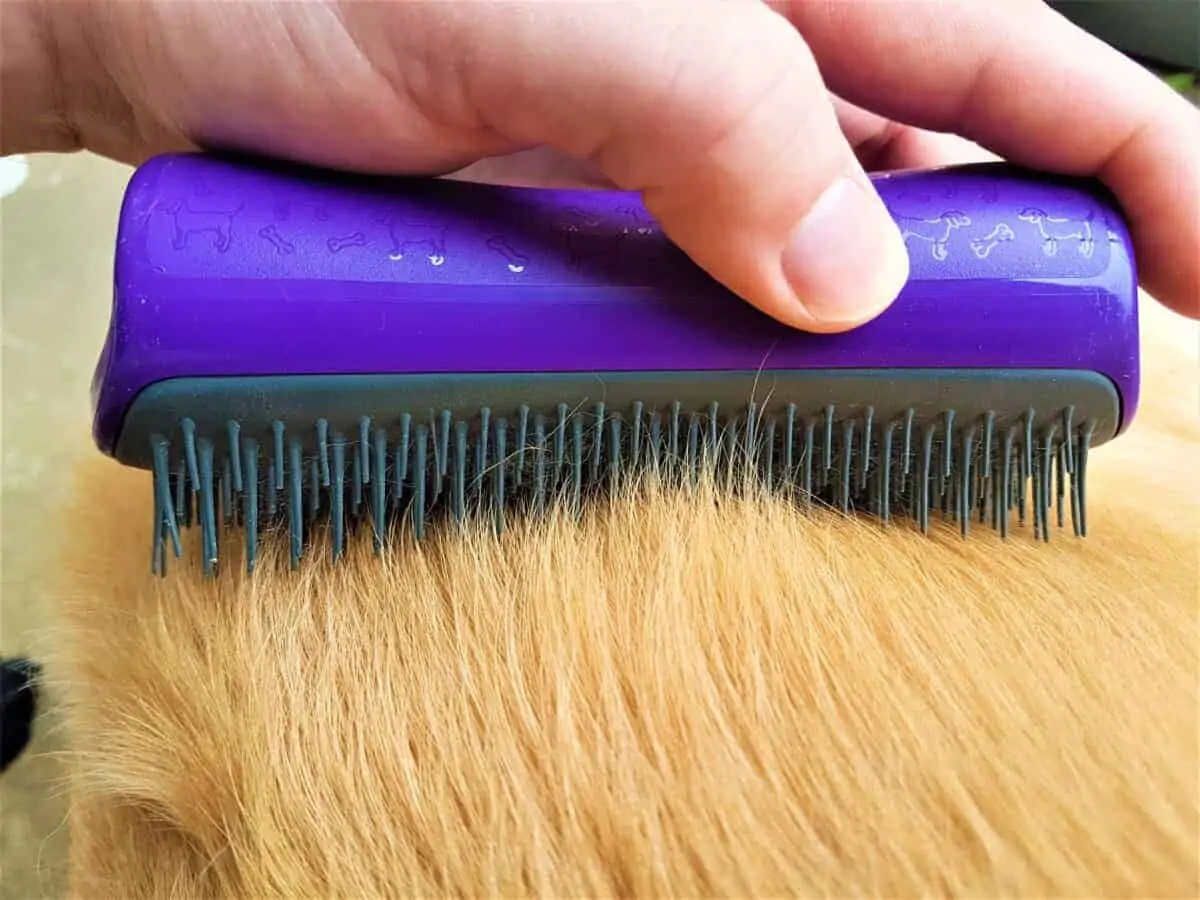The color of your dog’s fur is an important feature and there are times when we look at our dogs and see a difference in their appearance.
Dog’s fur changes color due to age. as your dog grows older its fur will adapt to its environment, becoming more coarse and tough. Puppies will often have lighter softer fur which will develop gradually over time.
There can be a few other factors that affect your dog’s fur. this article will look at some of those factors and asses the reasons for such changes.
Contents
Is It Normal for My Dog’s Fur to Change Color?
Dogs can change their fur color in many different ways, but the most common is through molting. Molting is a process where the dog sheds its old outer coat and replaces it with a new one. This can happen multiple times a year, and depending on the breed, it could happen every few months or even less. The main reason dogs molt is to make room for new fur growth and keep them warm during the winter when they are inactive.
It’s important to note that while it may be expected for a dog’s fur to change color, it doesn’t mean you should let your pet get cold or leave them out without any proper protection from the elements! Like humans, dogs are susceptible to colds and other illnesses when exposed to poor weather conditions. Have a look at our article, “Walking Your Dog in the Winter”, for some great tips on dealing with colder weather. Fur color can change with age and can even be inherited in some breeds, such as the German shepherd. The following are some of the most common causes of a dog’s fur changing color.
- Shedding
- Melanoma
- Fungal infection
- Alopecia areata

Do Dogs Change Color With Seasons?
Dogs change color with the seasons because they are living creatures. Their bodies are made up of different types of cells, which can reflect the changes in their environment. Dogs’ skin also changes color during the year as they get older and as they mature.
Dogs’ skin comprises melanocytes, which produce eumelanin and phaeomelanin pigments. Eumelanin is a darker pigment and has brown or black hair color. Phaeomelanin is a lighter pigment that produces white or cream-colored hair.
Pigment production can vary depending on the dog’s age, health, and diet. Puppies have less pigment than adult dogs, who have more pigment than old dogs. Dogs with a lot of sun exposure may have lighter fur and may be more prone to tanning than dogs who do not spend much time outside in hot weather. Unfortunately, it can sometimes be hard to keep your dog out of the sun, providing shaded areas in the garden is one. This behavior however is perfectly normal as many dogs enjoy the sun, check out our article on why dogs enjoy sitting in the sun, for more information.
Are you wondering why your dog’s fur is getting darker? Dogs with long hair and a thick undercoat are more likely to darken their fur during winter, allowing them to keep warm when temperatures drop. Laying hens have a layer of feathers over their skin that helps keep them warm, but these feathers do not cover the entire body like a dog’s fur does. If a laying hen spends most of her time outside or if she has a coat made up of short hair, she will have less protection against cold weather than one who spends most of her life indoors.
When the Dog Is Aging
If your dog is getting older, its coat may become duller because of the change in seasons. This can make it more difficult for sunlight to reach your pet’s skin and cause premature aging of the coat. You may even find that your pet scratches themselves more often when they have duller fur on their body.
Change in Temperature
Dogs have several adaptations that allow them to adjust their body temperature more efficiently than humans. Their fur coat provides insulation against cold weather, and most dogs have a layer of fat under their skin that can be warmed by exercise or exposure to sunlight (or both!).
As for the color changes, seasonal changes in daylight hours and temperature can affect how much pigment is produced by various body parts. Some breeds tend to have lighter coats during summer because their ancestors live near water sources or in areas with less snowfall. In addition, in warmer climates, some dogs may be more prone to sunburn than others due to their dark coats.

Do Dog’s Coats Change With Age?
Coat changes are common, but it’s hard to predict when they will occur. All dogs begin their coats as a puppy. Some may have a few shedding hairs that appear later in life, while others don’t shed at all. However, you can expect your dog’s coat to change with age if you adopt an adult dog as a puppy.
As your dog ages and grows, his coat will become thicker and more coarse, with longer hair on his legs and feet. His coat may also get darker as he gets older. This is normal for most dogs, but some may develop bald patches on their backs or legs if they have been bred for those traits in their line of breeding stock.
Dog coats also change with age because of genetics and the environment. If you have a toy breed puppy like a Yorkshire Terrier, for example, its coat will be shorter than other dogs of its breed because it must stay cool in warm weather. Long-haired breeds like German Shepherds or Labrador Retrievers grow their coats longer in cooler weather to help keep warm. The genetic factors that affect a dog’s coat include:
- Hair type: A dog has a specific hair type based on its genetic makeup. Some dogs have curly fur, while others have straight fur. This can be affected by genetics or environment (such as diet).
- Coat color: Dogs come in different colors, including black, brown, and white. This can be affected by genetics or environment (such as diet).
- Length: Even though length may be considered a genetic characteristic in humans, it isn’t necessarily so in dogs. A long-haired dog may have longer hair than a short-haired dog if they both have the same genetic makeup, but they may also have shorter coats.
Dogs have different coats for different reasons. Some breeds have short fur that sheds quickly because they need their coats to regulate their body temperature. Other dogs have longer hair to stay warm in the winter months. Long-haired breeds also tend to shed more than short-haired breeds because they have more hair follicles on their bodies and, therefore, more cells in their coats that are ready to clear out of season.
How Can You Tell if a Dog’s Coat Is Healthy?
The health of your dog’s coat can be a significant factor in how healthy he is. If the coat does not look good, it can be hard to tell if there are any underlying issues with your dog’s health. A healthy-looking coat will have a shiny appearance and be free of tangles and matting. If your dog has long hair, you may notice that his fur looks dull or even dry. There are several ways that you can tell if you have a healthy-looking coat on your dog:
- Look at the Skin – Look at the skin under the fur. If a lot of hair is missing and wrinkles are visible, it could be something serious like ringworm or dermatitis (an infection).
- Examine Their Paws – Look at their paws to see if they have any signs of infection, such as redness or swelling, in addition to dandruff and scabs on their paws (which can indicate fleas).
- Look at its ears and nails. The ears should be clean and dry with no signs of infection or ear mites (fleas can cause these). The nails should be short and smooth without cracking or breaking (this could indicate a poor diet).
- Watch for bumps around the eyes, mouth, and groin area and on the tail (called demodectic mange). These bumps can be caused by fleas or an allergic reaction to food.
- Is there a visible change in the dog’s coat?: If a dog has a healthy coat, it will be shiny and smooth with no mats or tangles. A dog with an unhealthy coat will have mats and tangles, especially on his legs, back or neck.
- Does the dog have dry skin?: Dry skin can be caused by poor diet, parasites, or allergies, so you should check if your dog is suffering from any of these conditions before blaming his dry skin on genetics alone. If you notice your dog has dry skin even when he drinks plenty of water and is fed a high-quality diet, there are some things you can do to help heal his skin.
Differences Between Adult Coat and Puppy Coat
There are many differences between a puppy’s and an adult’s coats. The main difference is that adult dog coats are longer than puppy coats. Here are the main differences.
Coat Length
Adult coat growth is much slower than puppy coat growth. It takes about a year for a puppy to go from puppy coat to mature adult coat length. Adult dogs typically reach full maturity after two to three years of age, depending on how well the dog’s diet has been managed.
Color
Adult coats are often darker than puppies because they have had more time to darken with age. However, this does not mean that all adult dogs have dark coats – some do not and still retain their puppy markings.
Markings
Puppies have different markings on their bodies compared to adults; however, these may not appear in the same places as an adult dog’s markings. For example, puppies may have a different coloration or marking on their chest than adult dogs, but they still have similar markings elsewhere, such as on the head or legs.
Quantity of fur
The quantity of fur on an adult dog is usually more substantial than that on a puppy. This means that the fur will be thicker, and you will find it harder to brush out because it has become densely coated over time.
Hair texture
Adult dogs have soft, silky fur that allows them to move freely without getting tangled in their fine fur. Puppies have coarse fur that may get trapped in the young animal’s fur and objects around it, so the pet parent must regularly comb out any mats or tangles

What Is The Difference Between Hair and Fur
This shouldn’t change your evaluation of whether your dog’s fur is changing color. However, it will influence how you care for your dog’s fur which can dictate its overall appearance.
There is technically nothing different when it comes to the biological structure of dog hair and fur, in fact, they are both made from Keratin. Keratin is a natural protein that forms the structure of hair or fur and keeps it strong and healthy.
Some studies suggest that shampoo containing Keratin Hydrolysates helps keep hair stronger. However delving further into this, it appears that these shampoos only add a temporary protective layer, which helps protect the permanent structure beneath. Therefore long-term use could keep hair or fur strong and healthy
Caring For Your Dogs Fur
Although there is little you can do to prevent an aging dog’s fur from turning darker, you can make it appear healthier.
- Feeding your dog a healthy diet can go a long way to helping keep your dog’s coat healthy. Choosing foods with high omega 3 can give each hair a shinier look.
- Regular grooming is an important factor in keeping your dogs coat healthy. Try brushing them gently to remove any dead or loose hair, this helps encourage new growth. In turn, this will lead to a fuller coat with fewer tangles.
- removing any environmental material from your dog’s fur is a must. Mud and plants can entangle themselves within your dog’s coat and cause it to look aged and unhealthy.
- Remember to remove mats and knots that have been caused by general day-to-day activities. These mats can keep building until they become rather uncomfortable for your dog.
- Regular washing removes all that mud and plant material from your pooch’s fur. This will also give you a good opportunity to run a brush or comb through their fur, straitening and cleaning all over.
- A trip to the groomers doesn’t go a miss, especially if your dog is well versed in the outdoors. Groomers will also be able to trim long hairs or nails and tidy everything up.
Conclusion
So there you have it, your dog’s fur changing color is something that can commonly happen. Of course, it’s essential to understand why your dog’s fur is changing color and how to tackle any potential problems. Age is the most obvious reason for changing fur, all you need to do is look at those pictures of your pup when they were a puppy to see an obvious change.

